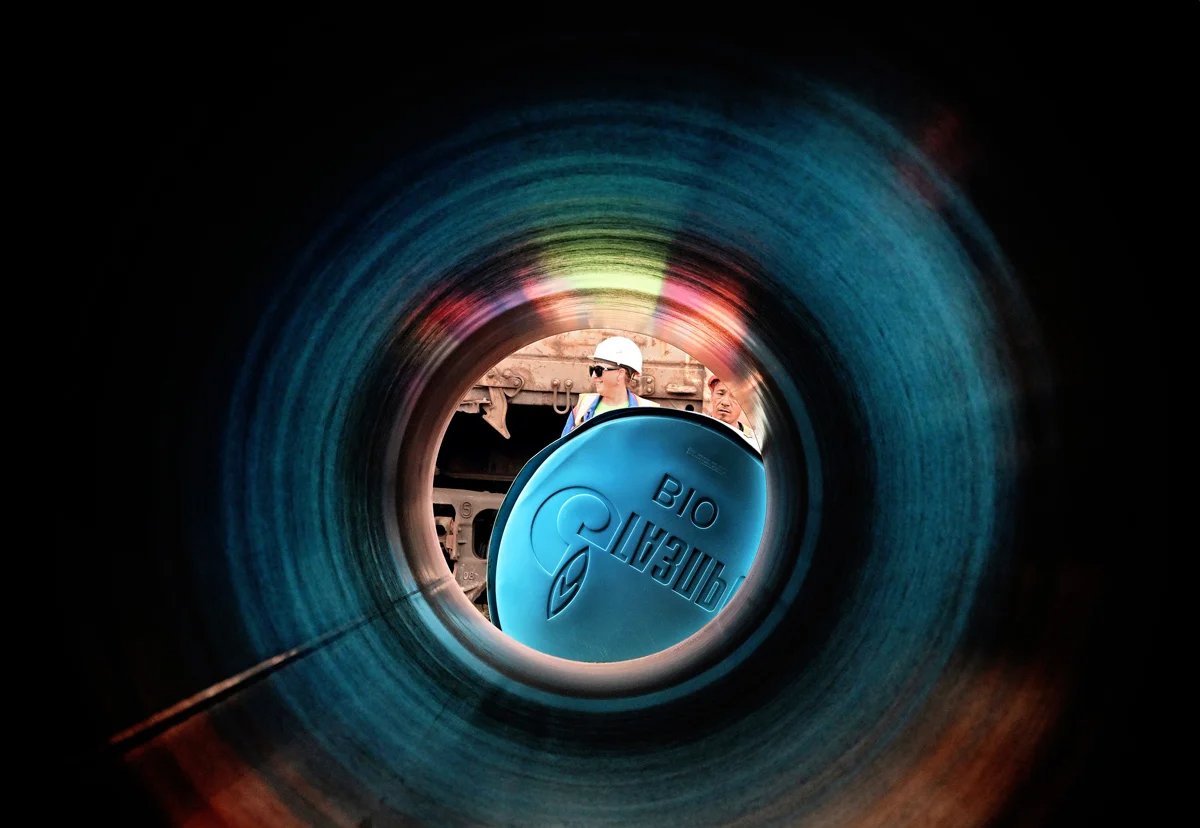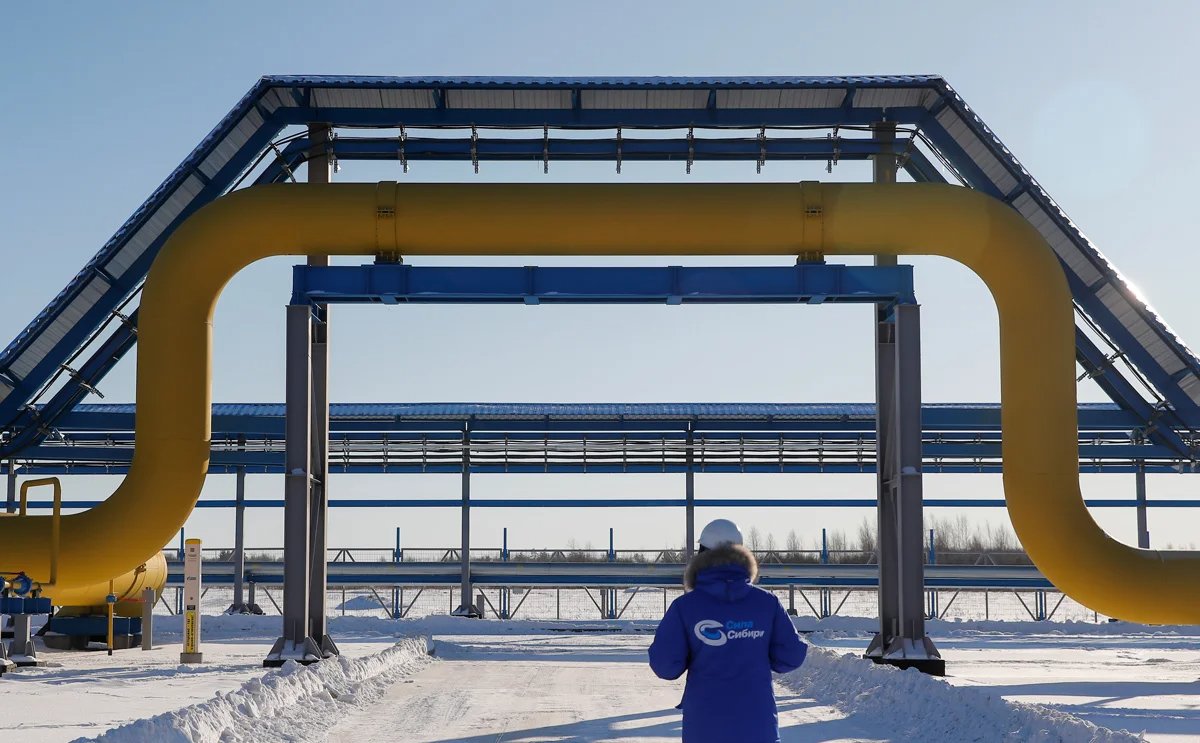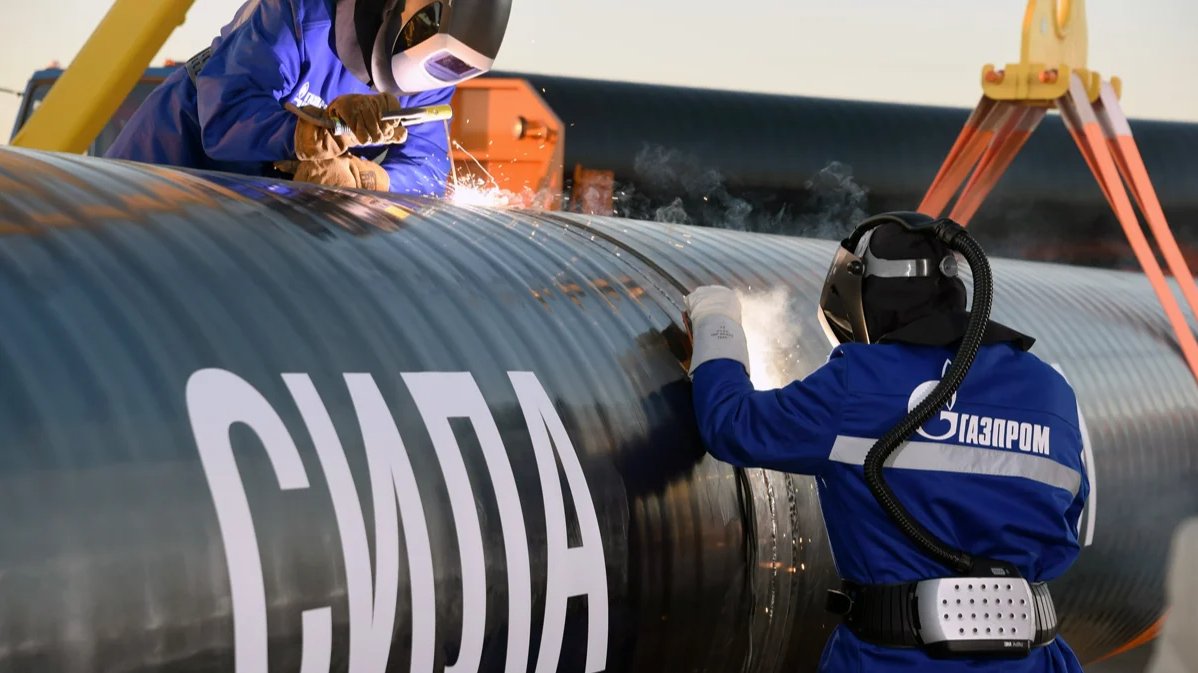Despite optimistically touting the Kremlin’s “unlimited” partnership with China while on yet another state visit to Beijing in May, Vladimir Putin once again came back from his trip empty handed, with a long-sought contract for new gas exports to China via a new pipeline no closer to being signed.
The impasse at which Moscow and Beijing have found themselves over the second of the two Power of Siberia gas pipelines for much of the past 20 years can largely be attributed to China’s reluctance to strike a deal that doesn’t offer it massively beneficial terms. Instead of pushing forward with the giant infrastructure project, Beijing appears content to bat away every new concession offered by Moscow to the extent that it sometimes appears to be deliberately sabotaging the entire enterprise.
Frustrated as Moscow is with Beijing’s incessant demands, it is in a very different position: unlike China, which has multiple other sources for importing gas, Russia has all but lost Europe, until recently its main buyer, and has yet to replace it with buyers of comparable size. All of this allows China to dictate its own conditions and to shamelessly present Moscow with impossible demands.
Russian energy giant Gazprom and The China National Petroleum Corporation (CNPC) signed the framework documents for the proposed pipelines in 2006, midway through Putin’s second presidential term. The project envisaged building two pipelines, the first of which, took the eastern route through the Russian Far East from Khabarovsk via Vladivostok to China, and was called Power of Siberia. The second pipeline would connect Western Siberia to China and though initially called the Altai pipeline, it was renamed Power of Siberia 2 in the mid-2010s. While Power of Siberia went online in 2019, construction work on Power of Siberia 2 has yet to begin as terms and conditions are still being negotiated. The following are some of the stumbling blocks.
Condition 1: Sell gas to China at Russian domestic prices
Shortly after the signing of the initial framework documents, Beijing began pressuring Moscow to sell its gas at half or even a third of the price at which it sold its gas to Europe. There were even reports that China was seeking to buy Russian gas at an even lower price than that used for the domestic Russian market.
Initially, CNPC demanded a price of $70 per 1,000 cubic metres, though it subsequently raised that and settled on a price of $100. Nevertheless, this was three times lower than the $250– $300 at which Gazprom sold gas to Europe.
Presented with such unreasonable demands, Moscow opted to break off negotiations altogether, and to focus instead on growing domestic gas sales. After several rounds of negotiations between Putin and the Chinese leadership, the Altai project was put on hold indefinitely in 2009.
However, Moscow was concerned it could lose all access to the enormous and rapidly growing Chinese market if it failed to reach an agreement, and that China would soon find alternative sources for its gas supplies. Furthermore, Russia’s powerful construction and metallurgy lobbies were lobbying hard for the construction of new pipelines, while on the European market competition was becoming stiffer due to an increase in liquified natural gas (LNG) deliveries from the United States and increased volumes of gas exports from Azerbaijan.
These pressures were sufficient to bring Russia back to the negotiating table in 2011, though once again the parties were unable to come to an agreement over the export price. Russia was hoping to get China to agree to the same price it charged Europe, around $350 per 1,000 cubic metres, while Beijing was only prepared to pay Russia as much as it paid Turkmenistan — around $250, so again the talks made no headway.
However, according to a Financial Times report in May, China has now returned to its original demand that it be allowed to purchase gas from Power of Siberia 2 at domestic Russian prices, which are regulated by the Russian authorities. At present, depending on the region, that price is around $62 for 1,000 cubic metres.
This is notable mainly as during 2023, the price at which China purchased gas from the original Power of Siberia pipeline grew to $287 for 1,000 cubic metres — after paying just $159 in 2021 — even exceeding the price by Europe for Russian gas imports.
However, according to classified documents obtained by Reuters, the price may drop back to $157 by 2027, which would result in additional financial losses for Gazprom, which last year alone posted a record loss of €6.3 billion. In total, Gazprom suffered losses of €12 billion in 2023, but these were partially offset by profitable sales of oil and electricity.
Condition 2: No pegging the price to expensive fuels
Another crucial stumbling block has been the price formula used to calculate the price of gas sales, which tied the rate to the price of several types of fuel on world markets, which are collectively known as the benchmark.
International gas purchase contracts are usually tied to several indexes, including the Japan Crude Cocktail (JCC), Henry Hub in the United States, and stock exchange quotations on fuel in the EU and UK. In the late 2000s the Chinese refused a Gazprom proposal to tie its gas export prices to the rather high JCC benchmark, causing Gazprom once again to put the project on ice for several years.
In fact, the Chinese themselves had in 2013 proposed agreeing a fixed price for gas deliveries via both pipelines based on the prices for shale gas in the United States, which at the time were low due to oversupply on the US market. The Russians objected to Beijing’s proposal, however, stressing that it considered that the price had already been agreed on. This once more derailed negotiations.
It is unknown whether there were any demands from Moscow or Beijing to tie this contract to any benchmarks, but analysts believe that China’s strong negotiating position is enabling it to hold out for an advantageous price tie. “China has the leverage to include whatever formula they want,” Petras Katinas, an analyst at the Centre for Research on Energy and Clean Air, told Novaya Gazeta Europe.
Condition 3: Reroute the pipeline to where gas is needed
Since the mid-2000s, another significant objection on Beijing’s part to Power of Siberia 2 has been the route of the proposed pipeline, which Moscow originally called the “western route”, and envisaged going directly through Russia’s mountainous Altai region to western China.
The Altai route is Gazprom’s firm preference, despite the challenges of constructing a pipeline over a mountain range and the protests planned by Russian environmentalists, as the route is the most direct one between the gas fields of the Russian Arctic and the Chinese border.
After 13 years of talks, the Kremlin finally conceded to Beijing’s demands and agreed to reroute Power of Siberia 2 to the east, meaning that it will now deliver gas to far more industrially developed regions of China.
Perhaps more significantly, Gazprom is keen to avoid routing the pipeline through either Mongolia or Kazakhstan, as that would entail paying transit fees that would cannibalise its profits. The main problem with the proposed route is that western China’s demand for gas is nowhere near as high as the 30 billion cubic metres of gas that Power of Siberia 2 would ultimately be capable of delivering.
After 13 years of talks, the Kremlin finally conceded to Beijing’s demands and agreed to reroute Power of Siberia 2 to the east, meaning that it will now deliver gas to far more industrially developed regions of China. However, it’s now down to Russia to come to an agreement with a transit country.
Condition 4: Don’t expect China to buy 30 billion cubic metres of gas per year
From the very beginning of negotiations in 2006, Gazprom had planned to deliver 30 billion cubic metres of natural gas to China via the Altai pipeline annually. But 10 years into negotiating the project, to the Kremlin’s horror, then-chairman of CNPC Wang Yilin told reporters that the 30 billion sum had only ever been mentioned by the press. The actual volume of eventual gas deliveries via Power of Siberia 2 was still to be negotiated, Wang said, forcing negotiations back to square one with a single comment.
According to Russian daily Kommersant, the Chinese stipulated in the mid-2000s that Gazprom’s pipeline should have the capacity to deliver 30 billion cubic metres of gas annually, but only guaranteed that it would purchase 10 billion cubic metres of gas per year.
What’s more, last year Chinese officials named Line D, a gas pipeline from Turkmenistan that has the same capacity as Power of Siberia 2, as the country’s main energy infrastructure priority.
Erica Downs, energy researcher at Columbia University, told Novaya Gazeta Europe that it was unlikely that China would need Power of Siberia 2 gas before 2030, while Petras Katinas from CREA predicted that China wouldn’t require gas deliveries on that scale from Russia until the mid-2030s.
“Given China’s focus on energy security, it is highly doubtful that the country would want to increase its dependence on Russian gas significantly. However, having an additional option for imports could be advantageous in case of disruptions in the global gas market”, Katinas said.
Condition 5: Grant China access to Russia’s domestic energy market
Despite Putin’s attempts to cultivate the Chinese leadership, meeting with senior Chinese officials several times a year throughout his time in office, there appears to be no substance to the claims of boundless mutual trust and friendship between the two countries, however frequently they are made.
In fact, when it comes to discussing gas deliveries, it turns out that there is no trust at all, as Moscow and Beijing have time and again denied each other access to the gas business’s holiest of holies — production and sale.
CNPC had hoped to get involved in gas production at new fields in eastern Siberia, not only producing fuel, but also building and managing a domestic gas pipeline in Russia with Gazprom. CNPC’s ambitions to enter Russia’s domestic gas business coupled with Russia’s reluctance to let outsiders into its home market meant yet more delays for Power of Siberia 2.
For its part, Russia also attempted to get a foothold in China, with then-deputy prime minister Arkady Dvorkovich announcing in 2013 that the construction of the Altai pipeline was contingent on the liberalisation of China’s domestic gas market and that if price regulation in China were weakened, then Gazprom would favour marketing its own fuel itself, as it once did in Europe. But it soon transpired that Beijing had no intention of letting a foreign player into its markets.

Equipment for the construction of the Power of Siberia gas pipeline in the river port on the Lena River in Russia’s Irkutsk region, 29 May 2024. Photo: Igor Ivanko / Kommersant / Sipa USA / Vida Press
Condition 6: Take out loans from Beijing
At the same time as the issue of China’s involvement in Russia’s domestic gas business arose, there was also discussion of Chinese banks lending Gazprom the money to build the new pipeline, and how much that loan might be.
Until 2014, Gazprom had always said it would fund the construction of the new pipeline itself using its own investment programme, though there was also talk of the Russian government approving a loan to Gazprom from the Russian National Wealth Fund.
By lobbying Moscow to accept financing from a Chinese bank, Beijing was effectively setting up its own banking sector to earn anywhere between $8 billion and $15 billion.
That all changed overnight when Russia illegally annexed Crimea and Gazprom suddenly found that foreign debt markets were closed to it. It was at this point that a Chinese loan to finance both pipeline projects was mooted.
Exploiting Gazprom’s financial difficulties to the full, China made progress on the Altai project contingent on Gazprom agreeing to accept a loan from its “partner” to build the Russian section of the pipeline. By lobbying Moscow to accept financing from a Chinese bank, Beijing was effectively setting up its own banking sector to earn anywhere between $8 billion and $15 billion.
But Russia and China were unable to agree on the interest rate and other conditions of the loan, leading both sides back to yet another impasse. A source at Gazprom reportedly told Reuters in 2015 that the company lacked its own financial resources to fund construction.
Condition 7: Grant China flexible volumes of gas delivery
Another insuperable financial obstacle has been the take-or-pay condition, a standard article in gas contracts, which establishes the minimum volume that must be paid for even if the buyer does not purchase everything that is delivered.
According to Novaya Gazeta Europe’s sources, Gazprom won’t agree to a take-or-pay level below 80%, which is the standard fixed in the contract for the original Power of Siberia pipeline, but Beijing won’t accept these conditions.
It’s unlikely that China intends to sign a new contract on take-or-pay conditions at present, Petras Katinas told Novaya Europe, adding that Beijing will probably insist on a fixed price for deliveries, or demand flexible volumes, so it is not obliged to buy gas that it does not need. At the same time, Katinas believes, China can insist that Gazprom take out a Chinese loan to fund the construction of the pipeline, fully aware as it is of the company’s poor financial situation.
Pipe dreams
In a couple of years, Gazprom will mark the 20th anniversary of its announcement that it would soon be signing a contract with China for the construction of a pipeline on the western route.
All the instruments that China has used to stop the massive construction project remain at its disposal, and the only significant development over that time is that the pipeline has been shifted to the east.

A Gazprom employee at a compressor station in the Amur region, 29 November 2019. Photo: Maxim Shemetov / Reuters / Scanpix / LETA
China is fortunate in its geographical position and is surrounded by gas suppliers, receiving fuel by pipeline from Turkmenistan and Myanmar, as well as shipping it in LNG from the Middle East and Australia. On top of that, there’s also Russian LNG produced by Gazprom on the island of Sakhalin and by Novatek on the Yamal Peninsula in the Russian Arctic. As a result, Beijing can afford to bide its time over Power of Siberia 2.
Gazprom, however, which has been unable to accept China’s conditions for almost 20 years and has been unsuccessful in trying to set its own, no longer has anywhere left to go. The loss of almost its entire European market since Russia’s invasion of Ukraine has meant that gas production has sunk to levels not seen since 1983, and the company still needs somewhere to send its Western Siberian gas. As a result, China can push for almost any concessions, knowing full well that Moscow is in a weak bargaining position and is increasingly desperate to strike a deal.
“If and when the project is built, it likely will be on China’s terms,” reads a report by Columbia University researchers Erica Downs, Akos Losz and Tatiana Mitrova. As Downs told Novaya Gazeta Europe, China must decide which kind of fuel dependence is riskier — pipeline gas from Russia or LNG deliveries. The problem for China with LNG may be that some tankers carrying it will have to take long sea routes, “which Beijing perceives as vulnerable to disruption by the United States,” says Downs.
“Given China’s focus on energy security, it is highly doubtful that the country would want to increase its dependence on Russian gas significantly. However, having an additional option for imports could be advantageous in case of disruptions in the global gas market,” Katinas said.
Despite China’s multiple levers of influence, the future of Power of Siberia 2 remains uncertain. Since the outbreak of the war in Ukraine, Beijing has shown itself to be cautious with respect to undertaking major new cross-border energy infrastructure projects and investments in the Russian energy sector since the start of the war, according to Downs, who added: “So, China has the luxury of time when it comes to making a decision about this pipeline.”
Join us in rebuilding Novaya Gazeta Europe
The Russian government has banned independent media. We were forced to leave our country in order to keep doing our job, telling our readers about what is going on Russia, Ukraine and Europe.
We will continue fighting against warfare and dictatorship. We believe that freedom of speech is the most efficient antidote against tyranny. Support us financially to help us fight for peace and freedom.
By clicking the Support button, you agree to the processing of your personal data.
To cancel a regular donation, please write to [email protected]

